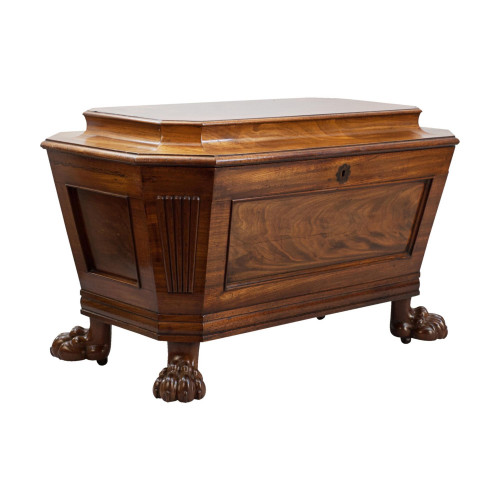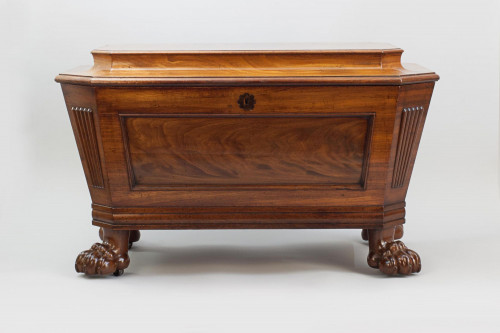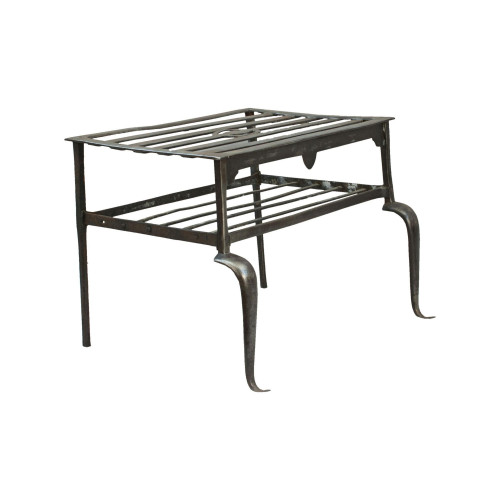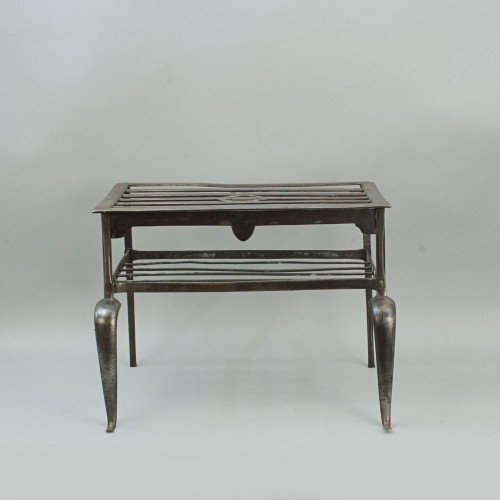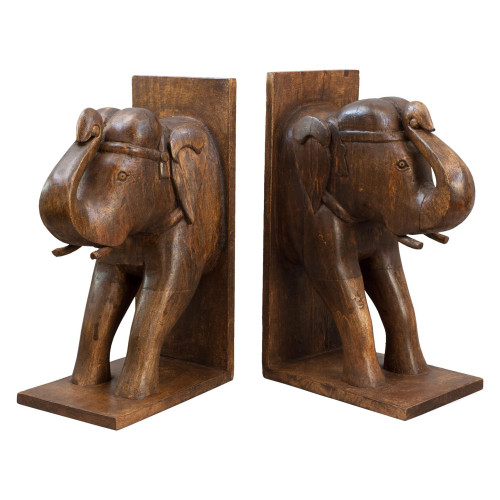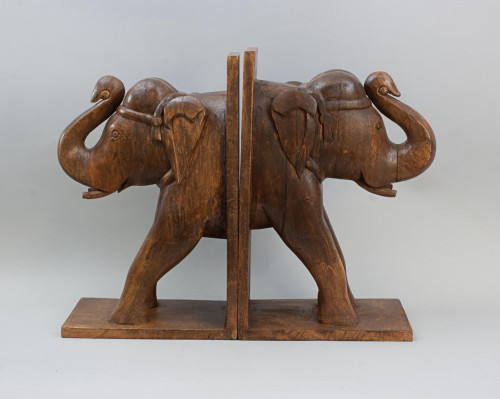- Home
- Accessories
- Art, Sculptures, Figures and Models
- Oak Artists Easel By Young Of London
Oak Artists Easel By Young Of London
Oak Artists Easel By Young Of London
29435
Vintage Young's Oak Artist's Easel.
An adjustable artist's studio easel raised up on a trestle base terminating in four casters, one castor is adjustable for levelling off. The painter's easel is made of solid oak with some oil paint remnants on the wood work, there is a London makers stamp to the rear 'Young Gower St London WC'. Percy Young, 137 Gower St, London WC 1882-1904, 131 Gower St 1905-1920, publisher, importer and manufacturer of artists' materials. It will take a picture or painting with a maximum height of 1m 36 cm. The height of a picture can be easily adjusted with the crank handle, raising the bottom edge of a picture from 22 cm at its lowest point to its full height of 1m 12 cm. A wonderful piece of artists equipment, ideal for painting or drawing, or just displaying a great picture.
Picture shown on the easel is NOT included in the price.
Taken from National Portrait Gallery website, British artists' suppliers, 1650 - 1950
Percy Young, 137 Gower St, London WC 1882-1904, 131 Gower St 1905-1920. Publisher, importer and manufacturer of artists' materials.
Percy Young (1854-1930) served the Slade School of Art, which had opened in 1871. He was preceded at 137 Gower St by J.D. Hirst-Smyth & Son in 1881 and, like Hirst-Smyth, initially described himself in listings as 'publisher, depot for supplying the Slade School of Art with english and foreign artists' materials'. He advertised as being immediately opposite University College (The Year's Art 1892).
Young was recorded in censuses, in 1881 as a wholesale stationer, age 26, born Sydenham, son of a solicitor, Thomas Young, in 1901 as a dealer in artists' materials, age 46, with wife Florence age 46, and two young daughters and a son, in 1911 as a publisher and importer and manufacturer of artists' materials, age 56, with his wife and children, and in 1921, by now retired, with his wife and an unmarried adult daughter. He died in 1930 shortly after his wife and was buried alongside her in Highgate Cemetery.
Young made claims for his business as having been established in 1826, according to an advertisement in the literature of Madderton & Co Ltd (qv), featuring Roché's pastels among other products; he acted as an agent for Madderton's Cambridge colours, 1897. He also sold Lefranc's panels and canvases (trade catalogue, 1894, see Katlan 1992 p.269). He published in translation J.G. Vibert's The Science of Painting, 1892, and Jacques Blockx's A Compendium of Painting, 1894. He had an account with Roberson, 1881-1908 (Woodcock 1997). In 1885 Young claimed to be 'In direct Communication with six of the principal Continental Artists' Material Manufactories' (The Year's Art 1885), as well as selling Roberson's oil colours and Winsor & Newton oil and watercolours and canvas. In 1893 he advertised 'Foreign Canvases and Colours, etc., a Specialité. Vibert's Petroleum mediums; Tyck, Lefranc, Foinet, and Blockx' Oil Colours; Maclé's Pastels' (The Year's Art 1893). Maclé's pastels were supplied by his successor, Henri Roché. Young stocked materials from Blockx (qv), 1891-1920.
Young's shop assistant, Robert Lovelace (1884-1969), has left his memories of the business, in a letter to Caspar John in 1962 (see Sources below). Lovelace recalled serving Augustus John, his sister, Gwen, and future wife, Ida Nettleship, with colours and paper. He remembered Augustus's large Moses and the Brazen Serpent (UCL Art Museum), a prizewinning picture at the Slade in 1898, which, he wrote, 'we framed in a large sloping black frame & helped to carry into the Slade School, just across the road'. He also mentions William Orpen and serving James McNeill Whistler.
Artists using Young's materials: Canvas marks for Percy Young have been recorded from the 1880s onwards (information from Cathy Proudlove). A canvas from the 1890s is Simeon Solomon, The Moon and Sleep, 1894, impressed stretcher (Tate). Among Young's customers was Gwen John in her early years, e.g., the canvas for her Self Portrait of 1902 (Tate, see Hackney 1999 pp.105, 205 n.9). Another customer was Ida Nettleship, Augustus John's future wife, who went to Young in 1895 for 'many fine colours... and large and good brushes and a mighty sheet of paper called "Double Elephant" size', to use for her work at the Slade, as she told her fellow student at the Slade, Edna Waugh, later Edna Clarke Hall (Michael Holroyd and Rebecca John, The Good Bohemian:The Letters of Ida John, 2017, p.23).
Marked canvases from the 1900s and subsequently include William Orpen's George C. Beresford, c.1900, stamped: PERCY YOUNG,/ GOWER STREET,/ LONDON./ W.C. , Night (no 2), 1907, impressed stretcher stamp: YOUNG/ 137 GOWER... (both National Gallery of Victoria) and Augusta Gregory, c.1904 (National Gallery of Ireland, information from Ele von Monschaw, October 2015) and Lottie and the Baby, 1907 (Walker Art Gallery), both with identical stretcher stamp, George Lambert's Lotty and a Lady, 1906, stamped: PERCY YOUNG/ 137 GOWER STREET,/ LONDON/ WC (National Gallery of Victoria), H. Margaret Spanton's Portrait of a Lady, c. 1900-10 (Dulwich Picture Gallery, see Ingamells 2008 p.224), Walter Sickert's La Hollandaise, c.1906, and L'Americaine, 1908, and Spencer Gore's North London Girl, 1908/9, Mornington Crescent, 1911, Houghton Place, 1912, impressed stretcher stamp, The Cinder Path, 1912, impressed stretcher stamp, and The Artist's Wife, 1913 (all Tate, see Morgan 2008 pp.134-5, see also 'The Camden Town Group in Context', research project, at www.tate.org.uk). For illustrations of Young's canvas stamps and panel markings, see British canvas, stretcher and panel suppliers' marks. Part 6, O to Y.
From the 1910s and 1920s, marked supports include Gilbert Spencer's The Crucifixion, 1915 (Tate), Mark Gertler's Merry-Go-Round, 1916, and The Tea Pot, 1918 (both Tate), Harold Gilman's Interior with Mrs Mounter, 1916/7, and Frederick James Porter's Peonies in a Yellow Vase, 1921 (both Ashmolean Museum, information from Jevon Thistlewood), and Alfred Neville Lewis's Mother and Child, c.1919, marked: PERCY YOUNG/ GOWER STREET/ LONDON WC (Stanley & Audrey Burton Gallery, Leeds, see Diaper 2012 p.76).
Lucien Pissarro used Young for supports in the 1910s, including Duton Hill, Essex, 1910, canvas board, impressed: YOUNG…(obscured) (Christie's South Kensington 21 March 2013 lot 27), Wild Boar Fell, Brough, 1914 (Manchester Art Gallery), Wise Lane, East Knoyle, 1917, stamped: PERCY YOUNG,/ GOWER STREET,/ LONDON,/ W.C. (Sotheby's 26 November 1997 lot 12), All Saints' Church, Hastings: Sun and Mist, 1918 (Tate, see 'The Camden Town Group in Context', research project, at www.tate.org.uk), Hastings: Mist, Sun and Smoke, 1918 (Ashmolean Museum, see Thistlewood in Sources below) and Dartmouth, 1922 (Manchester Art Gallery). There is a paint box in the Ashmolean Museum which once belonged to Pissarro (see Sources below) and one or more sketchbooks with Young's label as supplier in the Pissarro family archive (see Lydia Gutierrez and Aviva Burnstock, 'Technical Examination of Works by Camille and Lucien Pissarro from the Courtauld Gallery', Art Matters, vol. 5, 2013, p.24, n.23).
A paint box in the Whistler collection at Glasgow is embossed in the lid: Young Gower St. London W.C. (Hunterian Art Gallery). Other customers included Gwen Raverat (sketchbook, 1913, Fitzwilliam Museum, PD.56-1994), Stanley Spencer (sketchbook, British Museum, see Sources below) and Dora Carrington, who when in debt in 1916 wrote of 'Black abuses, and threats from Percy Young! Which threw me back again into despair'. The following year Carrington mentioned the death of Young's son and two nephews in the war and his fury against the government (David Garnett (ed.), Carrington: Letters and Extracts from her Diaries, 1970, pp.38, 74). The business closed in 1920 when Young reached the age of 65 without an heir to carry it on.
Sources: Jevon Thistlewood, 'Lucien Pissarro's Paintbox', Ashmolean Magazine, no.60, 2010, pp.21-2; Duncan Robinson, 'Stanley Spencer: Sketchbooks and a drawing from the Life Class', National Art Collections Fund Annual Review… for year ended 31 December 1992, 1993, p.75. Rebecca John kindly supplied an old transcript of a letter from Robert Lovelace to Caspar John, 6 August 1962; at the start Lovelace states that he was employed from 1906 but later he writes of assisting the students as a boy of say 14, i.e. in 1898, which appears more likely from the letter's contents. Lovelace was listed as an artists' colourman, age 16, in the 1901 census.
Dimensions:
1900-1949
Circa 1900
Oak
England
Good usable condition. Mechanism works well.
Thank you for your enquiry.
We will get back to you soon.
Please create wishlist to add this item to
RELATED ITEMS


















